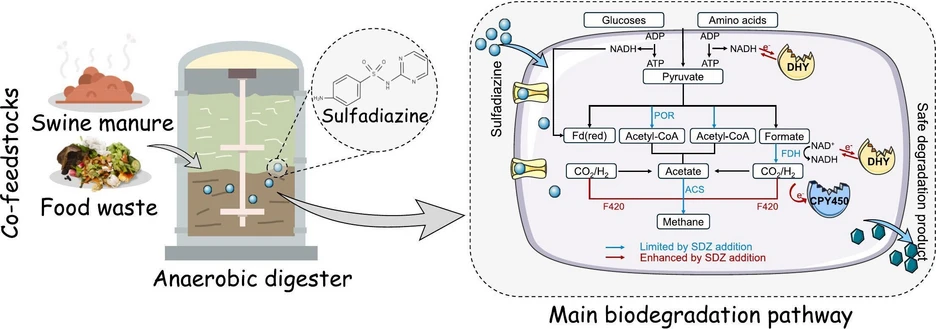This study explored the feasibility of employing the AcoD process for the removal of antibiotics and examined the impact of antibiotics on system performance. Sulfadiazine (SDZ), a prevalent broad-spectrum sulfonamide antibiotic in veterinary medicine, was selected as the model compound. Results showed that with the presence of SDZ at a concentration of 450 mg/kg total solids, the cumulative methane yield demonstrated a substantial decline of 79.2 % compared to the control group. The specific removal rate of SDZ was 47.5 % at 450 mg SDZ/kg total solids, surpassing those observed in traditional mono-anaerobic treatment processes. The elimination of SDZ by the AcoD system was predominantly ascribed to biodegradation. Within the AcoD system, cytochrome P450 enzyme (CYP450) served as the crucial enzyme in the biodegradation of SDZ. From a molecular point of view, the main interaction sites of SDZ with CYP450 enzyme were located as Thr258, Glu257, Pro428, Ala254, and Val318. Six transformation products were identified in the biodegradation process. Community diversity revealed that the predominant genera, Syntrophomonadaceae, Acinetobacter, AUTHM297, and Anaerolineaceae, were enriched in the AcoD process, which probably contributed to SDZ removal. In summary, the AcoD system may possess sufficient robustness to transform SDZ antibiotic.
